Assassin's Creed and Japan's Slasher-in-Chief
Does Japan's Prime Minister Need a History Lesson?
The enormously popular Assassin’s Creed video-game franchise has finally made it to Japan. The setting is the famously bloody Sengoku jidai, the ‘era of warring states’ (c. 1467 - 1600). This was a time when authority in Japan had broken down and the country had become a patchwork quilt of feuding provinces.
It’s fair to say that Assassin’s Creed: Shadows has not had the easiest of rides. First, critics were upset that Yasuke, a samurai of African origin, features as one of the main protagonists in place of a Japanese figure.
Then there was anger that gamers were being given the opportunity to smash up shrines and temples. Condemnation went as high as the Japanese prime minister, Shigeru Ishiba, who declared a few days ago: ‘we will not tolerate any acts that do not respect the culture and religion of a country.’
One might reasonably reply that smashing up precious - and in some cases sacred - pieces of architecture was one of the main things that samurai in the Sengoku period got up to.
The most famous victim of just such an incident was Oda Nobunaga, Japan's slasher-in-chief and one of the greatest figures behind the country's eventual reunification at the beginning of the 1600s. He met his fiery end in a temple in Kyoto called Honnō-ji.
Oda Nobunaga (1534 - 1582)
Traitorous members of Oda Nobunaga’s own retinue stormed the temple in the summer of 1582. Nobunaga and his men tried to fight them off, but in the end he was forced to perform seppuku - ritual suicide - while the temple burned to the ground around him.
So who was Oda Nobunaga? I spoke about him, and the wider Sengoku period, with Matt Lewis for the Echoes of History podcast a little while back:
Early in life, Nobunaga didn't seem destined for greatness. He came from a province of no great importance, Owari, and his father died while he was still a teenager. One can imagine the father's retainers wondering what on earth was going to become of them now that they were being led by a boy who liked to stroll around town stuffing himself with rice cakes.
But Nobunaga soon made it clear that he was not to be underestimated. Legend has it that he had the Buddhist priests who had prayed unsuccessfully for his father's recovery surrounded in a temple and then shot to death. Another instance of disrespect of culture and religion for Prime Minister Ishiba to add to his list…
Nor was that all. As Nobunaga's power grew and his worldly enemies succumbed one by one, Buddhism emerged as the greatest obstacle to Nobunaga's treasured hope of unifying Japan under his command.
Oda Nobunaga, as imagined in Assassins Creed: Shadows
In an extraordinary act of violence, Oda Nobunaga responded to one particular Buddhist sect which had come out in opposition to him by sending tens of thousands of heavily armed, battle-hardened men up the mountain where they had their base.
The Tendai sect was the wealthiest and most influential Buddhist sect in Japan. Their temple complex on Mount Hiei, overlooking Kyoto, consisted of around 3,000 buildings. Nobunaga's men looted them and then set fire to them, killing all the monks alongside men, women and children who also made their home on the mountain.
When the swirling, engulfing firestorm abated, what had once been a centre of great religious erudition and artistic achievement was reduced to a barren landscape, carpeted in ash, across which it was said that only badgers and foxes now moved.
Mount Hiei
A few years later, Nobunaga attacked another Buddhist enemy, the Jōdo Shinshū sect, based in what is now Osaka, with similar ferocity. This particular Buddhist sect worried him because it had enormous popular support across the country - to the point where the Patriarch of the sect had the power to declare Nobunaga an enemy of the Dharma and require ordinary civilians to take up arms against him.
This the Patriarch did - and Nobunaga responded by wiping out members of the sect in a series of battles before turning his sights on the fortified temple complex at Osaka. He first tried to starve its inhabitants out and when their allies began to supply them by sea, Nobunaga ordered the construction of enormous warships.
Victory at sea was followed eventually by the surrender of the temple complex by the Patriarch. But Nobunaga was denied his much anticipated stroll through the temple. Before he had the chance to set foot in it, the Patriarch's son set it on fire and burned the whole thing down.
A warship of the kind that Oda Nobunaga’s forces may have used
It sometimes strikes me as a bit strange that a man with as much blood on his hands as Oda Nobunaga would be such a revered figure in Japan. Some people see him as a person who knew how to concentrate the use of violence in such a way as eventually to overcome the chaos into which his country had fallen. Less than 20 years after his death in 1582, Japan found itself united and at peace - a peace that held for an extraordinary 250 years.
The makers of Assassin's Creed: Shadows have now reportedly removed the ability to attack shrines and temples from their game. Perhaps in 2025 this is the right thing to do. But no one, Japan's Prime Minister included, should be in any doubt about the grisly reality of the Sengoku period.
Nor was a willingness to use violence, including against religious sites, necessarily a sign of lacking culture. I will leave you with a few lines from a Nō play, from which Oda Nobunaga is said to have danced a few steps the night before one of his great battles:
When we consider man’s fifty years in this world, they are like a passing dream.
We have life but once . . . How perishable we are.
Before you go, might I ask a favour?
IlluminAsia is now moving to weekly posts and I would love to hear what you think about what you’re reading.
If you like what you see in a particular post, please take a moment to hit the heart button at the top of the email or in the Substack app.
Feel free to leave a comment, too!
… and of course to share the post, and to subscribe to IlluminAsia if you haven’t yet done so:
—
Images:
Oda Nobunaga - Wikipedia (fair use)
Oda Nobunaga as a character in Assassin’s Creed - Assassin’s Creed Fandom (fair use)
Mount Hiei - Wikipedia (fair use)
Warship - Wikipedia (fair use)


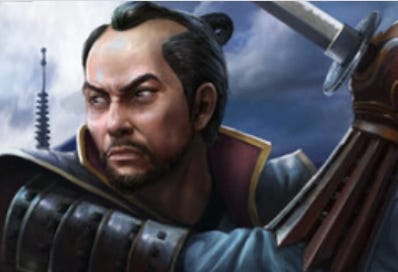


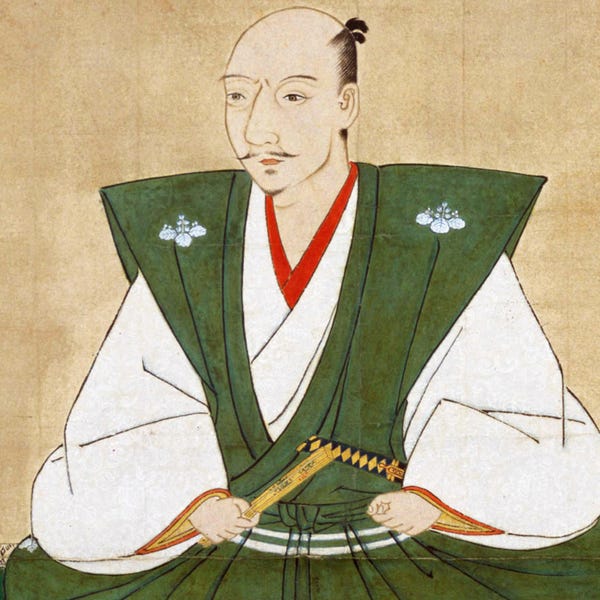
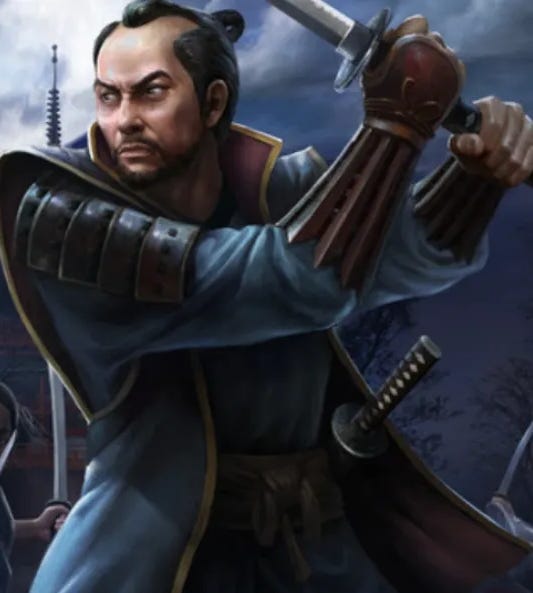
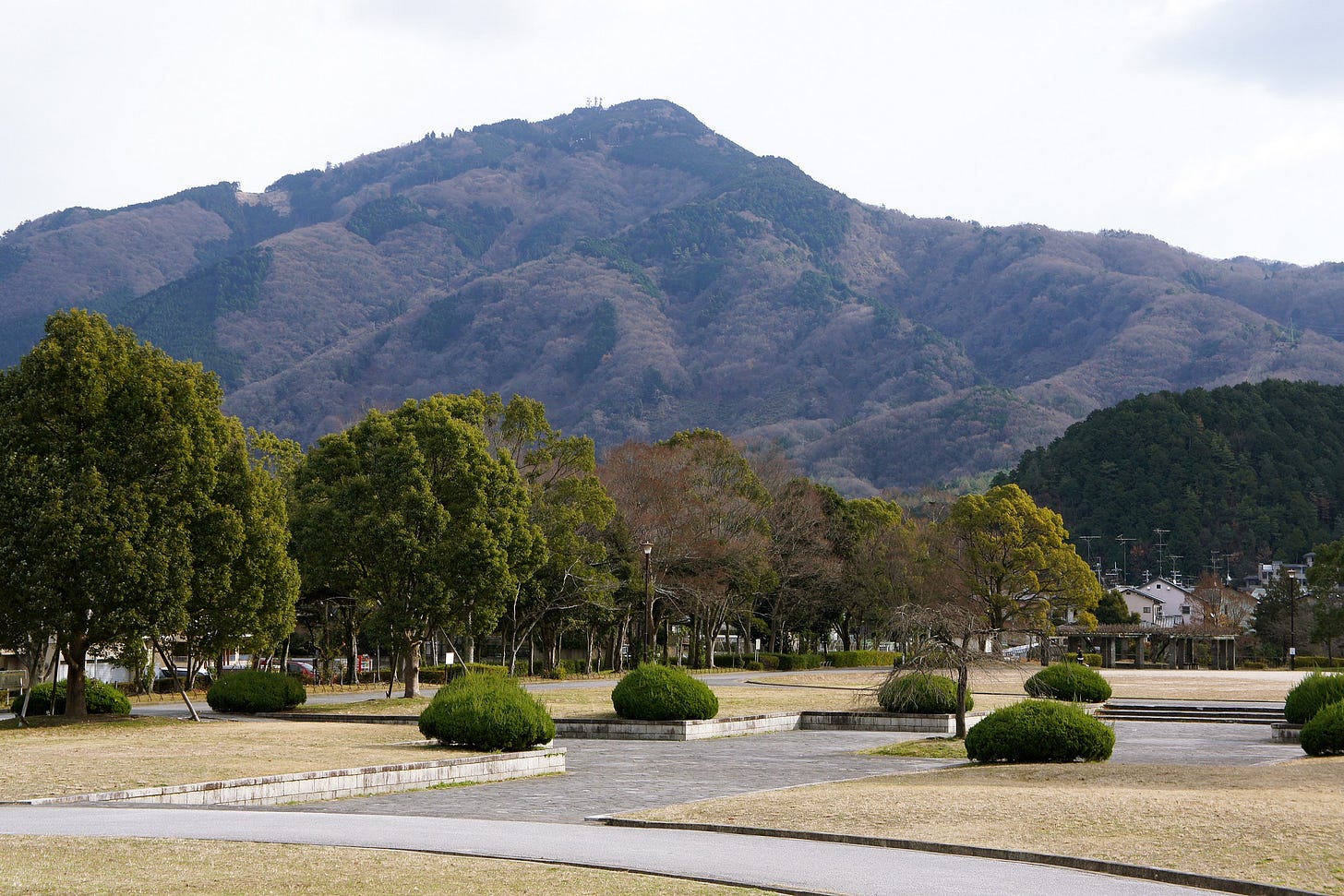
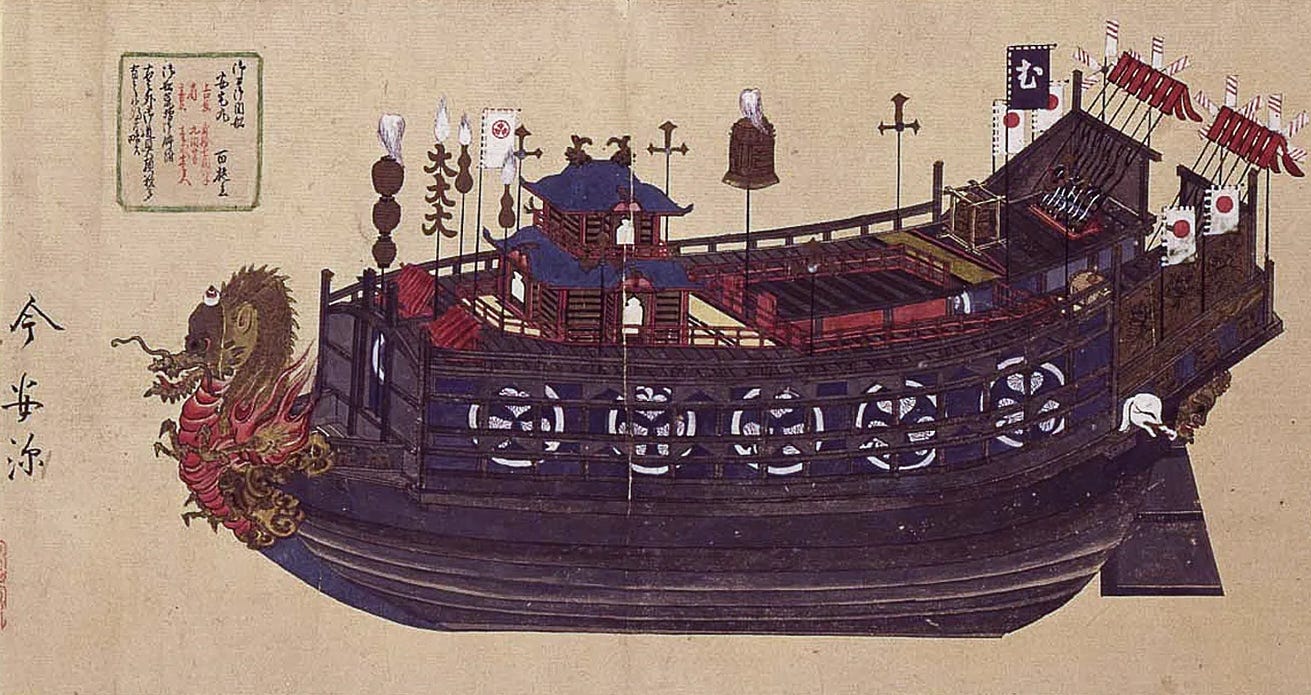
Great article! If I recall correctly, Assasin's Creed Shadows also received criticism for initially planning to release on the 30th anniversary of the Tokyo sarin attack. It's crazy how much controversy there has been surrounding this game.
Contrasting the initial ability to destroy shrines with the decision that players can't hunt the abundant wildlife (explicitly for 'cultural reasons') almost makes you wonder, given the Nobunaga precedent you laid out, if they specifically wanted to embrace historically accurate samurai demolition as a gameplay feature.
Reminds me of Ghost of Tsushima (though set much earlier), which handled some of these things differently. Have you had a chance to play it? It's a masterpiece, and its historical themes were actually what led me to discover your fantastic work (also masterpieces – currently loving The Light of Asia!).
Its sequel, Ghost of Yotei, is set to release later this year, exploring Hokkaido in 1603 (so right after the Sengoku period of AC:S). It'll likely touch on the unification's aftermath and the beginnings of Ainu cultural suppression. Honestly, if I worked marketing at Sony, I'd be trying to get you on a podcast ASAP! Since I don't, I'll just cross my fingers that maybe you'll write about it sometime around the release. Love reading your takes on video game / Japanese history intersections. Keep up the great work!